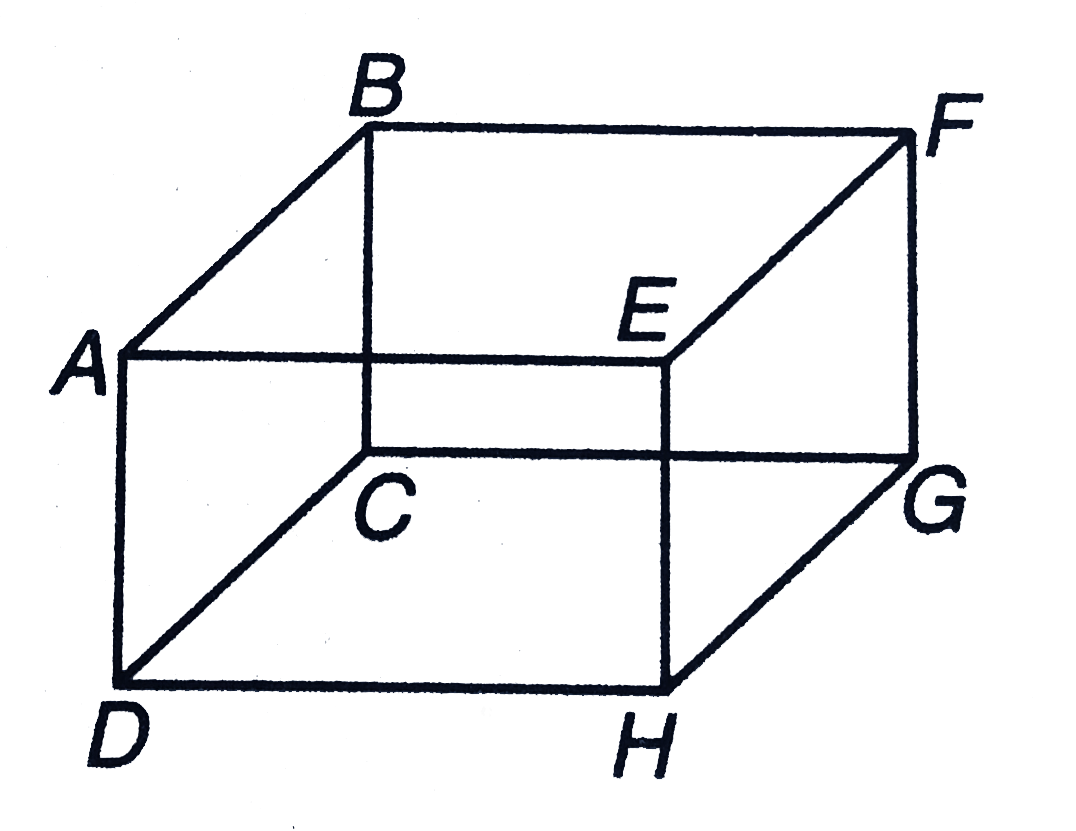Charge of 2 C is placed at the centre of a cube. What is the electric flux passing through one face ?
1(3ε0)
(14)ε0
2ε0
3ε0
The correct Answer is:A
To solve the problem of finding the electric flux passing through one face of a cube with a charge of 2 C placed at its center, we can follow these steps:
1. Understand the Concept of Electric Flux:
Electric flux (Φ) through a closed surface is given by Gauss's Law, which states that the total electric flux through a closed surface is equal to the charge enclosed (Q) divided by the permittivity of free space (ε₀):
Φ=Qϵ0
2. Identify the Total Charge:
In this case, the total charge (Q) placed at the center of the cube is 2 C.
3. Calculate the Total Electric Flux through the Cube:
Using Gauss's Law:
Φtotal=Qϵ0=2ϵ0
4. Determine the Number of Faces of the Cube:
A cube has 6 faces.
5. Calculate the Electric Flux through One Face:
Since the charge is symmetrically placed at the center of the cube, the electric flux will be uniformly distributed across all 6 faces. Therefore, the electric flux through one face of the cube (Φ_face) can be calculated as:
Φface=Φtotal6=26ϵ0=13ϵ0
Final Answer:
The electric flux passing through one face of the cube is:
Φface=13ϵ0
Electric flux (Φ) through a closed surface is given by Gauss's Law, which states that the total electric flux through a closed surface is equal to the charge enclosed (Q) divided by the permittivity of free space (ε₀):
Φ=Qϵ0
In this case, the total charge (Q) placed at the center of the cube is 2 C.
Using Gauss's Law:
Φtotal=Qϵ0=2ϵ0
A cube has 6 faces.
Since the charge is symmetrically placed at the center of the cube, the electric flux will be uniformly distributed across all 6 faces. Therefore, the electric flux through one face of the cube (Φ_face) can be calculated as:
Φface=Φtotal6=26ϵ0=13ϵ0
The electric flux passing through one face of the cube is:
Φface=13ϵ0
Topper's Solved these Questions
- ELECTROSTATICSBook:DC PANDEYChapter:ELECTROSTATICSExercise:Taking it together
Explore 105 Videos
- ELECTROSTATICSBook:DC PANDEYChapter:ELECTROSTATICSExercise:Assertion and Reason
Explore 15 Videos
- ELECTROSTATICSBook:DC PANDEYChapter:ELECTROSTATICSExercise:Check point 1.4
Explore 10 Videos
- ELECTROSTATIC POTENTIAL AND CAPACITORSBook:DC PANDEYChapter:ELECTROSTATIC POTENTIAL AND CAPACITORSExercise:(C) Chapter exercises
Explore 50 Videos
- GRAVITATIONBook:DC PANDEYChapter:GRAVITATIONExercise:All Questions
Explore 120 Videos
Similar Questions
Knowledge Check
An electric charge q is placed at the centre of a cube of side l. The electric flux through one of its faces will be
AQε0Bq6ε0Cqε0l2Dq4πε0l2A charge Q=1.8μC is placed at the centre of a cube of adge 55 cm. The electric flux through one of the faces of the cube is
AQ/ε0BQ/2ε0CQ/4ε0DQ/6ε0A charge of q μC is placed at the centre of a cube of side 0.1 m. the electric flux diverging from each face of the cube will be
Aq×10−6ε0 VmBq×10−66ε0 VmC6q×10−6ε0VmDq×10−4(ε0)Vm
A charge q is placed at the centre of a cube.What is the electric flux associated with one of the faces of cube ..............
View SolutionA point charge Q is placed at the centre of a hemisphere. Find the electric flux passing through flat surface of hemisphere.
View SolutionA charge q is placed at point D of the cube. Find the electric flux passing through the EFGH and face AEHD.

View SolutionAn electric charge is placed at the centre of a cube of side a.The electric flux
(i) through one of its faces q6∈0
through one of its faces q3∈0
(iii) through all of its faces q∈0
(iv) through one of its faces q2∈0
View SolutionA charge Q is situated at the corner of a cube, the electric flux passing through all the six faces of the cube is :
View Solution

